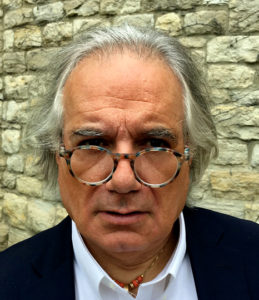
Ciao come state ??? Hi, how are you ???
Siamo entrati in Quaresima. We are in Lent.
The last day of Carnival was on February 13th, but for the Milan diocese it was the 17th and now we are all in Lent. I know for some of us, besides the religious moment, it means to give up something and for others it is signified by eating fish on Fridays. I would like, in this President’s Corner, to try to explain the history of two traditional Italian desserts that are present in the Italian culture to celebrate the Resurrection of Jesus.
 The first dessert is called La Colomba Pasquale (literally translated as “The Easter Dove”). This is considered by many to be the counterpart of the well-known Christmas desserts Panettone and Pandoro. Similarly to these Christmas desserts, the Colomba is made from flour, eggs, sugar, and yeast but it differs (from Panettone) in that candied orange peel is added instead of raisins. The shape of the dough is in the form of a dove and then topped with pearl sugar and almonds before being baked.
The first dessert is called La Colomba Pasquale (literally translated as “The Easter Dove”). This is considered by many to be the counterpart of the well-known Christmas desserts Panettone and Pandoro. Similarly to these Christmas desserts, the Colomba is made from flour, eggs, sugar, and yeast but it differs (from Panettone) in that candied orange peel is added instead of raisins. The shape of the dough is in the form of a dove and then topped with pearl sugar and almonds before being baked.
The Colomba was originally conceived by the publicity director of the Milanese baking company Motta, Dino Villani, during the 1930s. He wanted to continue using the same ingredients and baking methods that were used for their Panettone but gear it towards the solemn period of Easter. In 1944 the recipe was taken up by Angelo Vergani who founded the company Vergani Srl in Milan who still produces this cake even today.
Some prefer to believe that the Colomba Pasquale has its origins from legends dating back to the 7th Century when the Longobardo Queen Teodolinda was hosting the Irish abbot Saint Colombano along with his monks. An extravagant dinner was planned with delicious meats however, even though it wasn’t a Friday, Colombano and his guests refused to eat the meats during the Lent period of penitence and sacrifice. Queen Teodolinda didn’t understand and became offended. But, Colombano came to her rescue and raised his right hand and made a sign of the cross. At that moment the meats were transformed into candied doves made from bread. The Queen was so grateful that she gave Colombano some territory and there was built the San Colombano Abbey that today is located in Bobbio.
The second dessert is the  “Uovo di Pasqua” meaning Easter egg. The traditional large chocolate egg that is filled with toys is fairly recent, but the giving of decorated eggs goes back to Medieval times. It was Medieval thinking that the heavens and the planets were two separate hemispheres and these created the egg. Ancient Egyptians believed the egg to be the fulcrum of the four elements (water, air, earth, and fire). Exchanging eggs was part of the Persian culture that represented the arrival of Spring. Catholics used the egg as a symbol of life and of the risen Christ. In early times, the egg was boiled in water with leaves and flowers so that it would take on a golden color. Medieval times also saw the beginning of creating artificial eggs that were decorated in precious materials including gold, platinum, or silver which were presented to the aristocrats and noble families. Peter Carl Faberge began his prestigious egg decorating in 1883 as a special gift for Tsar Maria.
“Uovo di Pasqua” meaning Easter egg. The traditional large chocolate egg that is filled with toys is fairly recent, but the giving of decorated eggs goes back to Medieval times. It was Medieval thinking that the heavens and the planets were two separate hemispheres and these created the egg. Ancient Egyptians believed the egg to be the fulcrum of the four elements (water, air, earth, and fire). Exchanging eggs was part of the Persian culture that represented the arrival of Spring. Catholics used the egg as a symbol of life and of the risen Christ. In early times, the egg was boiled in water with leaves and flowers so that it would take on a golden color. Medieval times also saw the beginning of creating artificial eggs that were decorated in precious materials including gold, platinum, or silver which were presented to the aristocrats and noble families. Peter Carl Faberge began his prestigious egg decorating in 1883 as a special gift for Tsar Maria.
In modern times, many decorated eggs are collected and not eaten until after Lenten fasting. During the 20th Century the larger chocolate eggs became very popular. These eggs ranged in many sizes and most of them contained a surprise inside its hollow center. Initially the eggs were manufactured by prestigious bakers but has now become quite diffused all over the world.
Please continue to support the efforts of the Italian American Cultural Center of Iowa in order to spread our culture throughout our community.
I wish you all a blessed and thoughtful Easter season.
Buona Pasqua Happy Easter
Paolo Bartesaghi, President
Italian American Cultural Center of Iowa
